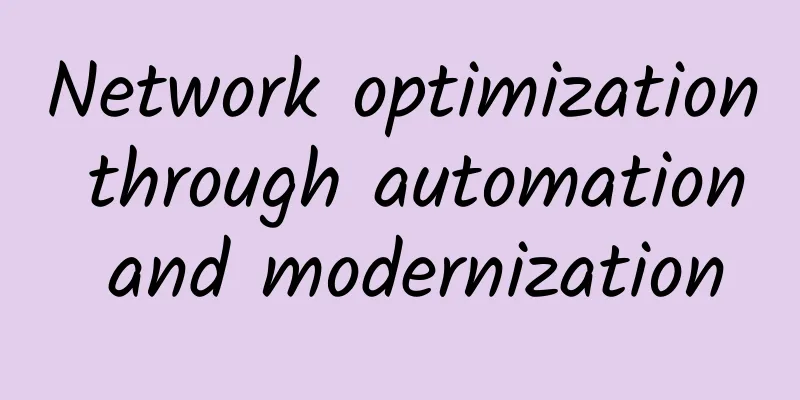5G will become a necessity in our future

|
Most of the 5G networks currently available are non-standalone (NSA), which means they leverage existing 4G infrastructure. This is why the media often treats them as a luxury rather than a necessity. These networks produce faster speeds and lower latency than 4G networks and are designed to support enhanced mobile broadband (eMBB) use cases. This includes ultra-high-definition video streaming and seamless cloud gaming, which are essentially enhanced versions of existing mobile technologies. However, it’s time to change the way we think about 5G. We need to think beyond just smartphones and the often-touted consumer streaming apps to the many other devices or machines that 5G will support. Once 5G’s capacity, resiliency, and lower latency become commonplace, we’ll see how critical it will be to entire industries and applications, and we’ll wonder how we could live or work without it. We’ll reach that point with the advent of 5G standalone (SA) networks. These new networks offer gigabit speeds, ultra-low latency, and seamless integration with local cloud computing infrastructure, operating independently of 4G infrastructure. But crucially, they include a new cloud-native 5G core. 5G SA networks will push core computing power closer to the edge of the network, helping to reduce latency and improve reliability. This evolution of 5G will support a wider range of use cases, such as truly immersive AR and VR environments, ultra-reliable low-latency communications, and massive machine-type communications that can be used to support a wide range of business and consumer services. Operators such as Telstra, T-Mobile, Vodafone, Rakuten and Etisalat have already announced that they are developing 5G SA networks. 5G-enabled services There are many use cases we can expect from 5G NSA networks. But it’s also important to note what “real 5G” (5G SA) will bring beyond these networks. In addition to consumer applications and services focused on entertainment, remote learning and work, perhaps the most important 5G service will be the next stage of the industrial revolution known as “Industry 4.0.” Our future economic prosperity may well depend on the success of the Industrial Internet of Things (IIoT) and smart factories. 5G will power sensors that can create more efficient production lines, monitor inventory in real time and improve all levels of logistics operations. To achieve this, these devices also need a highly resilient and stable connection - which means 5G SA. Likewise, and perhaps most relevant to our current situation, is the improvement in telehealth and collaboration tools. While telehealth consultations have been happening for some time, telehealth vendors are reporting a year’s worth of traffic on their platforms in just one month during the global lockdown. But even after the pandemic subsides, telehealth services will become commonplace as people gain confidence in how effectively and conveniently they can use virtual care. To ensure these services continue to be used for a variety of diagnoses, the experience must be seamless. This requires video calls over low-latency networks with the highest possible clarity, as well as the integration of remote biomedical sensors into handheld devices that enable instant communication between doctors and patients. Our current cellular networks do this as well as they can, but 5G will enable these scenarios at an unprecedented scale and efficiency. Adapting to the “new normal” of the web It would be remiss to discuss how COVID-19 has made us familiar with the idea of telemedicine without also discussing how the pandemic has prolonged the deployment of 5G. Operators claim that deployment is still largely on schedule, but with lockdown measures still in place, many of us are seeing our connectivity needs met by home broadband. While 5G will be an improvement, fixed broadband-enhanced 4G networks are generally fast enough to facilitate features like video calls that we rely on to stay connected. This means we may be less concerned about 5G in the short term, and 4G will remain an important connectivity service for a while longer. This is not to say that we can ignore the necessity of 5G. What will be critical in the coming months is flexibility. As conditions vary between countries (and sometimes even cities), all networks must be adaptable. Deploying networks with artificial intelligence, machine learning, and advanced analytics will create a more flexible architecture that can intelligently identify congestion hotspots. This ensures that the network can be optimized to maintain quality of experience. Best of all, these necessary changes are made automatically by software. It is this capability that will provide the platform for the true benefits of 5G, but getting all of this right will take time, continued investment, and innovative thinking. We have the opportunity to focus on these areas now as our connectivity needs continue to evolve. Our goal is to enable our businesses, organizations, and all of our “things” to take advantage of true 5G SA technology for a future of seamless, ubiquitous connectivity. |
<<: 2020 is already halfway through, how far is 5G from a full-scale outbreak?
>>: H3C focuses on new infrastructure to safeguard 5G commercial use
Recommend
5G bearer technologies have their own advantages, but optical fiber transmission is still a mystery
Recently, China Telecom released the "5G Era...
Maxthon Hosting: Los Angeles 9929 Line 38 yuan/month-1GB/20G SSD/600GB@200Mbps/Free backup
Aoyo Host (aoyozhuji, aoyoyun) was founded by shy...
Do you feel that 4G is slowing down? Too many users is the main reason and it has nothing to do with 5G promotion
After operators launched the "unlimited data...
Liu Liehong from the Ministry of Industry and Information Technology: 5G has become an important driving force for high-quality economic development
The 2021 Mobile World Congress (MWC) Shanghai Exh...
How will network reconstruction proceed in the future?
Network reconstruction is intended to overturn th...
Will 5G replace NB-IoT immediately after commercialization? Not really!
From May 21 to May 25, the international telecomm...
How likely is it that 700M will be jointly built and shared in rural areas?
At the online investor exchange meeting for the i...
Tencent Cloud lightweight application server 1 core 1G 3M annual payment starts from 128 yuan, 1 core 1G 30M Hong Kong cloud server 24 yuan per month
Tencent Cloud's lightweight application serve...
The shortest path to microservice containerization, best practices for microservices on C
Preface Microservices, as a more flexible, reliab...
TmhHost: Japan/Hong Kong/US CN2 GIA/High Defense Cloud Server 20% off for three months starting at 79.2 yuan
TmhHost is a Chinese hosting company founded in 2...
With 30,000 layoffs, what have American operators experienced?
According to public data, the scale of layoffs at...
[Black Friday] HostHatch: $29/year-dual-core/4GB/50G NVMe/5TB/1TB/Los Angeles and other data centers
HostHatch has launched the 2023 Black Friday even...
What is active monitoring without embedding code? Technology exploration behind improving user experience
In the Internet age, whoever controls the users c...
Three ways to improve WiFi signal
"I'm stuck in a circle after watching ha...
A400: 199 yuan/year Hong Kong & US VPS - dual core, 2G memory, 30G-50G hard disk, 1TB monthly traffic
A400 Interconnect is a Chinese merchant founded i...
![[Black Friday] SpartanHost Dallas VPS 50% off, optional AMD or E5 series, 10Gbps bandwidth, high-security VPS](/upload/images/67cabccb63bd4.webp)




![[Black Friday] Sharktech High-Defense VPS 50% off, $47.7/year-2GB/40GB/4TB/Los Angeles and other data centers](/upload/images/67cac00f76a6f.webp)



